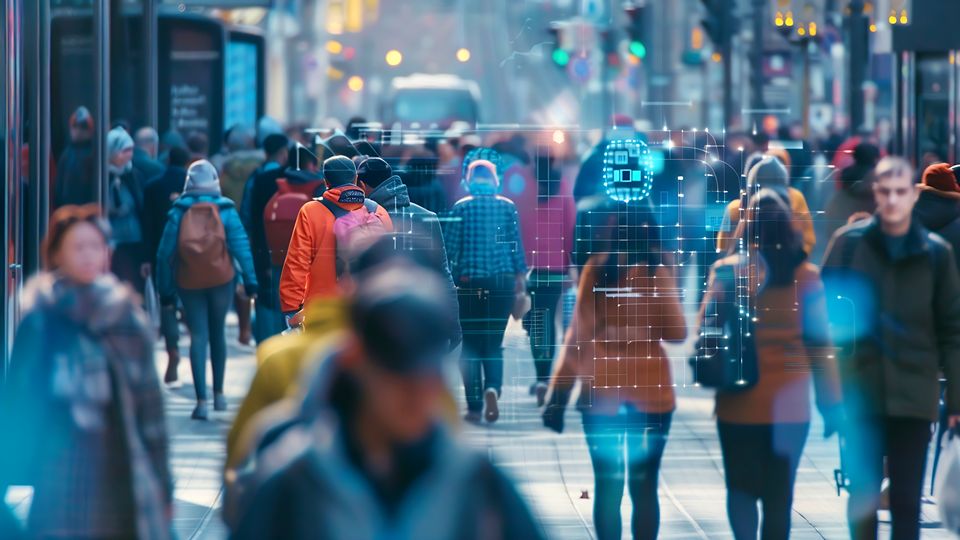Article
Part 1: The next evolution in people counting

People counting has come a long way since the days of simply measuring how many individuals enter or exit a venue. Modern footfall cameras can now analyse people’s age and gender and exclude staff, while multiple sensors can be connected to measure zone dwell time and generate heatmaps of different areas.
However, a new technology has now emerged: Re-ID. Re-ID, or re-identification technology, uses artificial intelligence to identify individual visitors based on numerous unique characteristics – such as their clothing, patterns and colours, accessories, and logos. This means the same person can be recognised across multiple sensors – without the use of facial recognition, making it GDPR-compliant.
Re-ID goes beyond regular people counting. With the ability to identify and continuously track individuals within retail environments, a whole new realm of possibilities opens up.
Tracking visit duration
Re-ID can accurately measure site-level dwell time using a single device. As the technology counts and tracks individuals as they enter and exit a store, it can also determine how long they remain inside. This provides a comprehensive overview of dwell time, as it is based on census-level store visit data. This sets Re-ID apart from Wi-Fi-based technologies, which estimate dwell time by pinging customers’ mobile devices and therefore only represent a sample of overall footfall.
Unique visitors and passers-through
A key advantage of Re-ID technology is its ability to identify people who are merely passing through a store, rather than actively shopping. It is often the case that shops and large department stores with multiple entrances are used as thoroughfares, with no intention to browse or purchase. Since Re-ID can track the same individual across multiple sensors, it allows for dwell thresholds to be set – identifying those who enter and leave within a short time as passers-through. This also enables stores to measure the number of unique visitors without double-counting those who enter and exit multiple times.
In addition to tracking passers-through, Re-ID enables a deeper understanding of customer journeys. Retailers can identify which zones are busiest or quietest and measure how long customers spend in each.
For example, Re-ID can track when a customer enters a fitting room and detect when they exit, measuring their dwell time. Furthermore, as customers can be tracked across multiple sensors, fewer devices are needed – the entire path does not need to be covered. In shopping centres, Re-ID can also be used to determine which stores shoppers visit and how many they frequent.
Staff exclusion
Unlike other staff-exclusion technologies, Re-ID does not rely on employees wearing lanyards or badges – which may not align with a retailer’s brand guidelines. Instead, Re-ID’s AI can distinguish staff from customers by analysing how long they spend in-store compared to others, and it can also learn to recognise staff uniforms. This is particularly beneficial for stores with large numbers of staff, employees who frequently enter and exit to assist customers, and lower-footfall stores (such as high-end luxury retailers) where excluding staff from counts can significantly impact conversion metrics.
Learn More About Re-ID Today
Interested in learning more about Re-ID and the future of people-counting technology? Click here to start a conversation with the team at Sensormatic Solutions today.
Explore related topics

